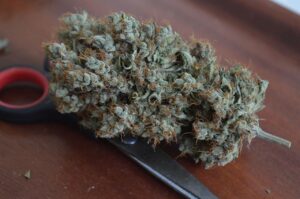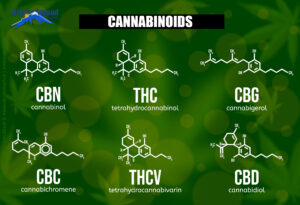Why elevated CBG coincides with reduced THC/CBD in Cannabis/Hemp
In his well-known doctoral dissertation published in 2009, David Potter found that photoperiod may explain reduced potency in Cannabis crops exhibiting elevated CBG. He found that photoperiod extension from 12hrs to 13hrs caused flowering to cease less abruptly in the late flower cycle, and thus resulted in more new flowers containing more CBG and less of the desired cannabinoids CBD or THC. The study found that while growers may achieve greater mass with 13-hour lighting, the overall crop THC or CBD potency was undeniably reduced.

To the consumer, this may explain why some commercial crops display elevated CBG coupled with depressed THC/CBD levels. The grower very likely runs 13-hour lighting and harvests at the appropriate number of weeks, but with many florets still bearing white stigmas at their tips. Overall, the crop is finished, but the florets at the tips of clusters are young, numerous, and contain more of the precursor CBG than end products THC or CBD.
For consumers smoking a large, fox-tailed floral cluster, florets closer to the base will have more finished cannabinoid (THC or CBD) and less precursor cannabinoid (CBG) than florets closer to the tip. Florets closer to the tip in this case may exhibit reduced psychoactivity as compared to florets closer to the base of the same floral cluster. To experience the mix of cannabinoids in the proportions presented on the grower’s label, grind the whole flower and enjoy the homogeneous mixture.
Learn more about cannabis labels; read The Ideal Cannabis Label
Elevated CBG may seem attractive for a grower, but the result is an undeniably less potent product. A photoperiod of 12 hours results in an abrupt end of flower growth in a genetically predisposed number of flowering days. This may result in less late-forming floral biomass, but the increased THC/CBD potency of the existing biomass could be of greater economic benefit to the grower, and of greater medical benefit for the consumer.
Jeff Cole makes no new claims here, and hopes to aid both commercial growers and home-growers by highlighting Dr. Potter’s invaluable research.
Reference: (Potter DJ, 2009) Propagation, characterisation and optimisation of Cannabis sativa L as a phytopharmaceutical. Doctoral thesis, King’s College, London, 2009. Available at Archive.org https://ia801604.us.archive.org/25/items/CANNABISSATIVAASAPHYTOPHARMACEUTICAL/THE PROPAGATION CHARACTERISATION AND OPTIMISATION OF CANNABIS SATIVA AS A PHYTOPHARMACEUTICAL.pdf (accessed 20210209)



